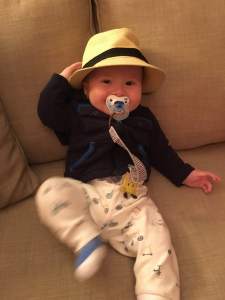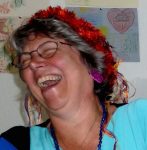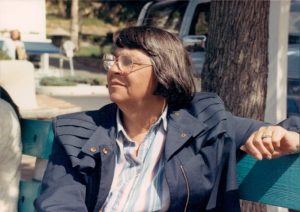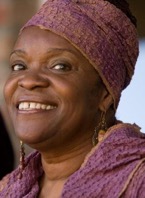Fifteen years ago, my teen-aged daughter Laura introduced me to Sara Evans’ song “I Could Not Ask for More.” Years later, this was the song I’d been singing for weeks in anticipation of the Trailblazing Boards of Directors Meeting. (see my previous blog). I was thrilled that Laura was excited to fly across the country with me to participate fully in this groundbreaking meeting.
Waiting to board our flight to Atlanta, I received an email response to a question posed within the Wisdom & Money board. I gasped.
The response brought the months long collaborative process of a joint leadership team from Be Present, Inc. and Wisdom & Money into question. I knew that this email had the potential to destroy the collaborative partnership we’d worked so hard, and beautifully, to build.
This was just the sort of boulder in the road that used to spook the wild horse in me, sending me riding in circles of fear convinced that all would be lost.
Not this time. I knew the truth of the partnership we had all walked together. I was well practiced in the transformative power of our core practices of the Be Present Empowerment Model and Christian Wisdom practices. In addition, despite the message I was reading, I also knew how powerfully the email’s author had been an active and enthusiastic participant in all our preparations.
 Cruising at 35,000 feet, my emotions began to settle. I wasn’t yet sure exactly how we would address this issue, but I was clear that moments like these were ripe with potential for transformation: personally, within our Wisdom & Money and Be Present partnership, and rippling out into our culture.
Cruising at 35,000 feet, my emotions began to settle. I wasn’t yet sure exactly how we would address this issue, but I was clear that moments like these were ripe with potential for transformation: personally, within our Wisdom & Money and Be Present partnership, and rippling out into our culture.
Only a few days remained before we would all be together. Many were already on their own circuitous trail to Atlanta, so phone calls weren’t possible. We also had a full agenda for our time together.
But I was clear. I was one of the three board chairs tasked with opening this joint board meeting, a historic moment in our long partnership. Powering through as if nothing had happened doesn’t work for me anymore and is definitely out of alignment with our shared values.
Together, we needed to find time to meet together and walk through this moment, trusting that transformation was possible. Even at this eleventh hour.
Agility is key when blazing new trails.
Those of us who were in Atlanta early began to image how we could have the needed conversations both with the Wisdom & Money Board (the recipients of the emails) and the Trailblazing Joint Leadership Team (those whose work together had been brought into question). The agenda was examined carefully. Alternatives considered. Topics consolidated. A plan slowly emerged that allowed time for the needed conversations while still holding to the essential parts of our board meeting. Each member was contacted and, when possible given traveling constraints, included in the conversation. All occurred in less than two days.
The joint leadership team agreed to meet early on the first day of our board meeting. First, we wanted to understand what was said and intended in the email itself.
The author shared the he’d had his own pondering time at 35,000 feet as he flew toward Atlanta, and he began to share the fruit of his reflections. Without deflecting or minimizing, he spoke clearly about his actions and his understanding of what happened that lead to the email and his awareness of the dangerous “subverting” impact of his words.
We all listened, honoring his struggle and his process. Then we each shared honestly about the impact his email had on us.
Witnessing the steadiness and power of the author’s process of coming to new sight – both what propelled the writing of the author’s email and his articulation of his own movement to clarity and integrity – was beautiful beyond words. Together, we fully used one of our joint core practices, the Be Present Empowerment Model, in a way that supported and expanded his own personal leadership development and strengthened our partnership.
That which could have destroyed instead strengthened our partnership.
The following evening the Wisdom & Money Board of Directors had a separate meeting to address the issues in the email. Many on the board are new in using the Be Present Empowerment Model and had limited experience in the level of collaboration that ran through the Trailblazing leadership.
Most had not noticed anything awry with the email.
It would have been very easy for most of the board to have taken the comment in the email about the limited collaboration at face value. We’ve all experienced partnerships with skewed power dynamics, and too often we accept that as inevitable. I knew that it was important for the full Wisdom & Money Board to both to witness the writer of the email’s own emerging clarity about his behavior and to experience the transformative potential of our shared use of the Be Present Empowerment Model.
Again, he stepped in clearly. His insight into his behavior had deepened.
That which could have destroyed, and often does in organizations and partnerships, strengthened our shared trailblazing skills. It flowed through our Wisdom & Money Board out into the larger Trailblazing Boards of Directors meeting, thereby rippling out into our culture, so starving for just and equitable ways to be in partnership.
Stay tuned for the next episode of Blazing New Trails… Hold onto your hats!

 Nine months ago, my Texas roots were in high gear. I struggled to grip the reigns as two organizations dear to my heart began preparations to come together for a Trailblazing Boards of Directors meeting in February. As we galloped toward our time together in Atlanta, I tried to hold onto my different hats—my Wisdom & Money Board Chair hat, my Be Present Vision-Based Social Change Fund Development Co-chair hat and my own personal hat as a participant in both organizations. That’s a lot of hats for a two-handed woman.
Nine months ago, my Texas roots were in high gear. I struggled to grip the reigns as two organizations dear to my heart began preparations to come together for a Trailblazing Boards of Directors meeting in February. As we galloped toward our time together in Atlanta, I tried to hold onto my different hats—my Wisdom & Money Board Chair hat, my Be Present Vision-Based Social Change Fund Development Co-chair hat and my own personal hat as a participant in both organizations. That’s a lot of hats for a two-handed woman.
 In my last
In my last 
 Three decades ago, I was gifted with a dream that would change the course of my life.
Three decades ago, I was gifted with a dream that would change the course of my life. I stepped into
I stepped into 

 This may be the season where Christmas songs jangle along at every store, but it is more rightly the season of a bold and wild woman.
This may be the season where Christmas songs jangle along at every store, but it is more rightly the season of a bold and wild woman. Joseph, a man also visited by angels and bold enough to say YES. Tongues wagged around town at this scandalous couple.
Joseph, a man also visited by angels and bold enough to say YES. Tongues wagged around town at this scandalous couple. One minute I’m holding my grandson, delighted by his giggles, and the next minute I find myself nauseated by the latest morsel of news. I love this country and delight in the daily pleasures and interactions of my life here. So much is beautiful. And yet, a dark and sinister shadow is also part of our national truth.
One minute I’m holding my grandson, delighted by his giggles, and the next minute I find myself nauseated by the latest morsel of news. I love this country and delight in the daily pleasures and interactions of my life here. So much is beautiful. And yet, a dark and sinister shadow is also part of our national truth.
 history and experiences. I was searching for the answers to the following questions: “How do I get to know the fullness of who I am? Not just someone’s best friend, caring mother or daughter of migrant farm workers. How do I thrive in this world and not just survive while living in a culture where people make assumptions about who I am based on my race, my gender, my class?
history and experiences. I was searching for the answers to the following questions: “How do I get to know the fullness of who I am? Not just someone’s best friend, caring mother or daughter of migrant farm workers. How do I thrive in this world and not just survive while living in a culture where people make assumptions about who I am based on my race, my gender, my class? My cooking claim to fame is that I can open the refrigerator, scan the shelves, then create a meal out of whatever is available. (Leftover Oatmeal Cobbler. Salsa and Vegetable Soup.) I may check a recipe, but only to play with possibilities. If I have a handful of apricots, I might mix together something Moroccan. Sprigs of cilantro could lead to Whatever-I-Have-on-Hand Enchiladas. Scanning the shelves, I am curious to find out what dish will emerge from the random ingredients I find there. No fears or what-ifs. I’m not concerned with tomorrow’s lunch or next week’s dinner. And I trust that whatever I make will be edible, and often delicious.
My cooking claim to fame is that I can open the refrigerator, scan the shelves, then create a meal out of whatever is available. (Leftover Oatmeal Cobbler. Salsa and Vegetable Soup.) I may check a recipe, but only to play with possibilities. If I have a handful of apricots, I might mix together something Moroccan. Sprigs of cilantro could lead to Whatever-I-Have-on-Hand Enchiladas. Scanning the shelves, I am curious to find out what dish will emerge from the random ingredients I find there. No fears or what-ifs. I’m not concerned with tomorrow’s lunch or next week’s dinner. And I trust that whatever I make will be edible, and often delicious. For a journey of the heart, it matters what I use as my guiding star.
For a journey of the heart, it matters what I use as my guiding star.
